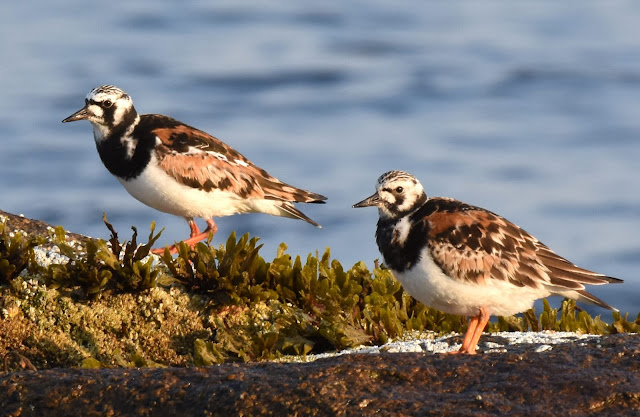 |
| Ruddy turnstone adult |
 |
| Ruddy turnstone, juvenile |
Turnstones are named for one of their feeding methods when searching for small mollusks and crustaceans at the tide line.
They become adroit foragers at the edge of the sea where morsels
are churned up in the turbulence. They always keep at least one eye on those
beneficent waves.
At the beginning of August turnstones share the shoreline
with only a few other bird species.
 |
| Herring gull |
 |
| Common eider |
 |
| Juvenile (l) and adult (r) turnstones with a Black-bellied plover |
 |
|
Ruddy turnstone landing
beside a juvenile Spotted sandpiper (l) and a Semipalmated sandpiper (r) |
 |
| American oystercatcher in background |
Turnstones bring an end to the ornithologically drab summer months on the shoreline. Feathered as they are, it's an extravagant turning point.




Great photos & info! "American oystercatcher"?! What distinguishes that "Nationality"? This is the time to see the Egrets massing at Sunset on Ten Pound Island for their migrations. Keep up the beautiful work, Martin!
ReplyDelete